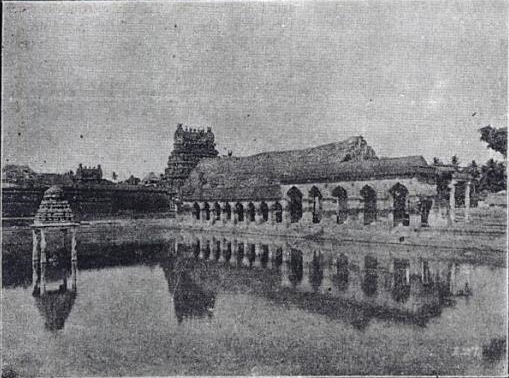|
G.N. Balasubramaniam
Gudalur Narayanaswamy Balasubramaniam (6 January 1910 – 1 May 1965), popularly known as GNB, was an Indian Carnatic singer. He innovated the art through emphasis on ''laya ''control and reducing the ''gamakas'' which eventually made Carnatic music appeal to the lay and the learned alike. He was also a Tamil film actor.Ariyakudi Iyengar inspired him. Balasubramanian was born in Gudalur, a small village near Mayavaram in Tamil Nadu. He was the son of G V Narayanaswamy Iyer, who was a keen student of music. Throughout his younger years, he observed with utmost attention the techniques of the musicians of his day. Ariyakudi Ramanuja Iyengar became his manasika guru and inspiration. While his father dreamed of living in a villa at Luz Church road through GNB becoming a successful lawyer, the musician in GNB made way for greater goals in life. He completed his BA (Hons) in English Literature at the Christian College, Chennai, and took up a short music course at Annamalai University ... [...More Info...] [...Related Items...] OR: [Wikipedia] [Google] [Baidu] |
Mayavaram
Mayiladuthurai (formerly known as Mayavaram or Mayuram) is a town and district headquarter of Mayiladuthurai district in Tamil Nadu, India. The town is located at a distance of from the state capital, Chennai. Mayiladuthurai was ruled by Medieval Cholas and subsequently ruled by various dynasties, including the Vijayanagar Empire, Thanjavur Nayaks, Thanjavur Marathas and the British Empire. Mayiladuthurai was a part of the erstwhile Tanjore district until India's independence in 1947 and Thanjavur district until 1991 and subsequently a part of the newly formed Nagapattinam district. The town is known for agriculture, and weaving. As Mayiladuthurai is situated in East Coast, fishing plays an vital role on generating it's revenue. Mayiladuthurai is administered by a town panchayat established in 1866. As of 2008, the panchayat covered an area of . Mayiladuthurai comes under the Mayiladuthurai (State Assembly Constituency), Mayiladuthurai assembly constituency which elects a memb ... [...More Info...] [...Related Items...] OR: [Wikipedia] [Google] [Baidu] |
Tyagaraja
Thyagaraja (Telugu: త్యాగరాజ) (4 May 1767 – 6 January 1847), also known as Thyāgayya and in full as Kakarla Thyagabrahmam, was a composer and vocalist of Carnatic music, a form of Indian classical music. Tyagaraja and his contemporaries, Shyama Shastri and Muthuswami Dikshitar, are regarded as the Trinity of Carnatic music. Thyagaraja composed thousands of devotional compositions, most in Telugu and in praise of Lord Rama, many of which remain popular today, the most popular being "Nagumomu". Of special mention are five of his compositions called the '' Pancharatna Kritis'' ( "five gems"), which are often sung in programs in his honour, and ''Utsava Sampradaya Krithis'' ( Festive ritual compositions), which are often sung to accompany temple rituals. Tyagaraja lived through the reigns of four kings of the Maratha dynasty — Tulaja II (1763–1787), Amarasimha (1787–1798), Serfoji II (1798–1832) and Sivaji II (1832–1855), although he served none ... [...More Info...] [...Related Items...] OR: [Wikipedia] [Google] [Baidu] |
Radha Jayalakshmi
Radha (born 1932) and Jayalakshmi (1932 - 2014), popularly known as Radha Jayalakshmi ( ta, ராதா ஜெயலட்சுமி), were an Indian Carnatic music vocalist duo as well as playback singers in films in the 1940s and 1950s. They later became teachers and trained notable Carnatic music singers. Jayalakshmi was the playback singer of the duo, but was credited as Radha Jayalakshmi in the cine field. Radha was her cousin and singing partner on stage performances. They were early vocalists in the duo singing trend in Carnatic music which started in the 1950s and includes performers like Bombay Sisters and Soolamangalam Sisters. In recent times, the trend has been continued by popular Carnatic music singers like Priya Sisters, their disciples, Ranjani Gayatri, Akkarai sisters, and others. The duo was awarded the 1981 Sangeet Natak Akademi Award in Carnatic Music – Vocal, given by the Sangeet Natak Akademi, India's National Academy for Music, Dance and Drama Vid ... [...More Info...] [...Related Items...] OR: [Wikipedia] [Google] [Baidu] |
G N Balasubramaniam
Gudalur Narayanaswamy Balasubramaniam (6 January 1910 – 1 May 1965), popularly known as GNB, was an Indian Carnatic singer. He innovated the art through emphasis on ''laya ''control and reducing the ''gamakas'' which eventually made Carnatic music appeal to the lay and the learned alike. He was also a Tamil film actor.Ariyakudi Iyengar inspired him. Balasubramanian was born in Gudalur, a small village near Mayavaram in Tamil Nadu. He was the son of G V Narayanaswamy Iyer, who was a keen student of music. Throughout his younger years, he observed with utmost attention the techniques of the musicians of his day. Ariyakudi Ramanuja Iyengar became his manasika guru and inspiration. While his father dreamed of living in a villa at Luz Church road through GNB becoming a successful lawyer, the musician in GNB made way for greater goals in life. He completed his BA (Hons) in English Literature at the Christian College, Chennai, and took up a short music course at Annamalai University ... [...More Info...] [...Related Items...] OR: [Wikipedia] [Google] [Baidu] |
Andolika
Andolika is a Carnatic raga, which is also sometimes written as ''Andholika''. This raga is a ''janya'' of the 22nd '' Melakarta'' raga Kharaharapriya.''Ragas in Carnatic music'' by Dr. S. Bhagyalekshmy, Pub. 1990, CBH Publications Structure and Lakshana This ragam is an asymmetric scale and is classified as an ''audava-audava'' ragam (five notes in the ascending and descending scale).''Raganidhi'' by P. Subba Rao, Pub. 1964, The Music Academy of Madras * : * : The notes in this scale are ''chatushruti rishabham, shuddha madhyamam, panchamam, kaisiki nishadham'' in ''arohana'' and additional ''chatushruti dhaivatam'' in ''avarohanam'', in place of ''panchamam'' (see pictures). From ''Kharaharapriya'' scale (22nd melakarta), the ''gandharam'' is removed in this scale and the rest are used in asymmetrical manner. Since ''gandharam'' is removed this scale can also be considered a janya of 28th ''mela Harikambhoji'' scale, but since 22 comes ahead many prefer to use the ... [...More Info...] [...Related Items...] OR: [Wikipedia] [Google] [Baidu] |


